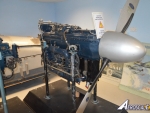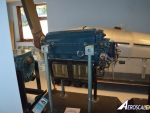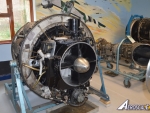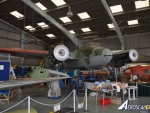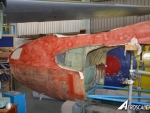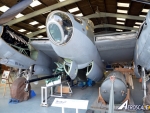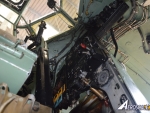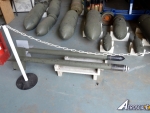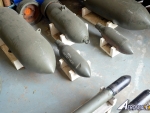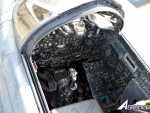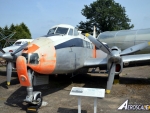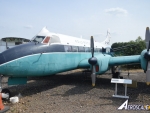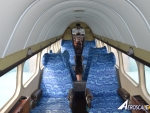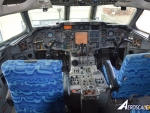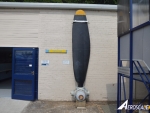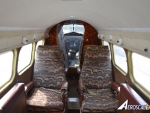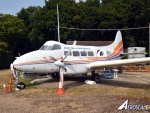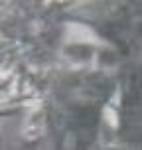1⁄1 de Havilland Aircraft Heritage Centre
3
Comments
A brief history
The site of the Hall and the Museum is, without doubt, a very old one. It is close to the first century BC settlement of Wheathamstead, the major Roman town of Verulanium and St. Albans which is of late Saxon foundation. Early notable (but unwelcome!) visitors to the area were probably Julius Caesar in 54BC, and Boadicea of the Iceni in 61AD. During the early 9th century the site was part of the Manor of Shenleybury. It was held by Asgar the Stallar, who was probably a high official to the Wessex King Egbert. After the Norman Conquest the Manor passed to the de Mandeville family who held it when the Doomsday Book was written in 1086. In 1380 the Hall passed in marriage to Sir John Montague, later Earl of Salisbury. It is perhaps at this time that the Manor acquired its now familiar name of Salisbury Hall. About 1420 Alice, Countess of Salisbury, married Sir Richard Neville, who became Earl of Warwick. He had two sons, Richard Neville (better known as Warwick the Kingmaker) and John, Marquis of Montagu, who were both killed at the Battle of Barnet in April 1471.A new house was built about 1507 by Sir John Cutte, Treasurer to King Henry VII and Henry VIII. The house was purchased in 1668 by James Hoare, a London banker. At this time the present house was built, bringing with it associations with Charles II and Nell Gwynne, who lived in a cottage by the bridge to the Hall. Her ghost is one that is said to have been seen in the Hall. The Hall passed to Sir Jeremy Snow's nephew, John Snell, and from then through various hands, and during the latter part of the 19th century was occupied by a succession of farmers. However, about 1905 Lady Randolph Churchill, as Mrs Cornwallis West, came here to live. Her son, Winston Churchill, became a regular visitor.
During the 1930s Sir Nigel Gresley, of the London and North Eastern Railway, was in residence. He was responsible for the A4 Pacific Steam Locomotives one of which, Mallard, holds the world speed record for steam locomotives of 126.5 mph. Rumour has it that the name came from the ducks in the moat.
In September 1939 the de Havilland Aircraft Company established the Mosquito design team in the Hall, the Prototype Mosquito, E0234/W4050, subsequently being built in the adjacent buildings. Nell Gwynne's cottage was the centre of a silk worm farm, which supplied the silk for Her Majesty the Queen's wedding and Coronation robes. De Havillands left in 1947 and the Hall slipped into a derelict condition. However, in 1955 the Hall was taken in hand by an ex Royal Marine Major named Walter Goldsmith who restored it and opened it up to the public. He brought back the prototype Mosquito, E0234/W4050, as one of the attractions in 1959, an action which led to the establishment of the Mosquito Aircraft Museum. Walter Goldsmith sold the Hall in 1981 and since then it has been restored to a very high standard and remains in private ownership to this day.
Please note that Salisbury hall is no longer open to the public.
The aircraft collection:
D - On display, R - Restoration project, S - In StorageG-ABLM Cierva C.24 D
G-ACSS DH 88 Comet Racer - replica - to be restored as Black Magic S
G-ADOT DH 87 Hornet Moth D
G-AKDW DH 89 Dragon Rapide D/R
G-ANRX DH 82 Tiger Moth D
G-AOTI DH 114 Heron 2D D
G-AREA DH 104 Dove 8 D
G-ARYC DH 125 Srs 1 D
G-AVFH DH 121 Trident 2e - Forward Fuselage D
G-JEAO BAe 146-100 - Fuselage D
D-IFSB DH 104 Dove 6 D
F-BGNX DH 106 Comet 1A - Fuselage D/R
W4050 DH 98 Mosquito I prototype D/R
LF789 Queen Bee - minus wings D
TA122 DH 98 Mosquito FBVI D/R
TA634 DH 98 Mosquito B35 (TT.35) D
TJ118 DH 98 Mosquito B35 (TT.35) - Rear Fuselage section D
WM729 DH 113 Vampire NF10 S
WP790 DHC-1 Chipmunk T.10 D
WR539 DH 112 Venom FB4 S
WX853 DH 112 Venom NF.3 S
XG730 DH 112 Sea Venom FAW.22 D/R
XJ565 DH 110 Sea Vixen D
XJ772 DH 115 Vampire T.11 D
XK695 DH 106 Comet C.2(R) - Nose Section D
- DH 106 Comet 2 simulator - Nose section D
J-1008 DH 100 Vampire FB.6 D
J-1790 DH 112 FB.54 D
BAPC.232 Horsa I/II Composite - Nose & Fuselage sections D
The museum also has a small but well stocked shop with de Havilland themed kits, books and mementos, there is also a display of de Havilland aero engines.
Museum open from First Sunday of March to last Sunday of October
Opening times: (last entry to museum 16:00)
Tuesdays, Thursdays and Saturdays 12:00 - 17:00
Sundays and Bank Holidays 10:30 - 17:00
A small museum that packs a lot in, it will certainly fill your afternoon; where else can you find four Mosquitos including the original prototype!
Comments
"About 1420 Alice, Countess of Salisbury, married Sir Richard Neville, who became Earl of Warwick".
He was never Earl of Warwick. He was a younger son, by a second marriage, of Ralph Earl of Westmorland and so not heir to the (Westmorland) earldom. He became jure uxoris (by right of his wife) Earl of Salisbury by his marriage to Alice, daughter and heiress of Thomas Montacute 4th Earl of Salisbury.
His son Richard was betrothed at six years old to Anne Beauchamp, daughter of Richard de Beauchamp 13th Earl of Warwick and his wife Isabel Despenser. Thus he became heir to a substantial part of the Montague, Beauchamp, and Despenser inheritance as well as the earldom of Salisbury.
When Beauchamp's son Henry, who was married to Richard's sister Cecily, died in 1446 followed by Henry's daughter Anne in 1449, Richard found himself jure uxonis Earl of Warwick. There then followed a protracted battle over parts of the inheritance, particularly with Edmund Beaufort, 1st Duke of Somerset, who was married to a daughter from Richard Beauchamp's first marriage. The dispute was about land, not about the Warwick title, as Henry's half-sisters were excluded from the succession.
AUG 10, 2013 - 02:10 AM
..well at least the museum looks interesting, somewhere I've been wanting to go for a long time, thanks for the post Lucky!
AUG 17, 2013 - 02:51 PM
Antoni - the history is as supplied by the museum I had no reason to question it.
Neil, you're welcome
As a side note the Comet fuselage is cocooned at the moment awaiting a respray in Air France colours. The very large prop is off an SRN4 hovercraft, the FB.VI is a composite of a FB.VI fuselage and an early none folding TR.33 wing from Israel.
The prototype Mosquito is in pieces going through a restoration (the red doped fuselage and yellow wing).
AUG 18, 2013 - 01:24 AM
Copyright ©2021 by Luciano Satornetti. Images also by copyright holder unless otherwise noted. The views and opinions expressed herein are solely the views and opinions of the authors and/or contributors to this Web site and do not necessarily represent the views and/or opinions of AeroScale, KitMaker Network, or Silver Star Enterrpises. Images also by copyright holder unless otherwise noted. Opinions expressed are those of the author(s) and not necessarily those of AeroScale. All rights reserved. Originally published on: 2013-08-10 06:09:26. Unique Reads: 33027





